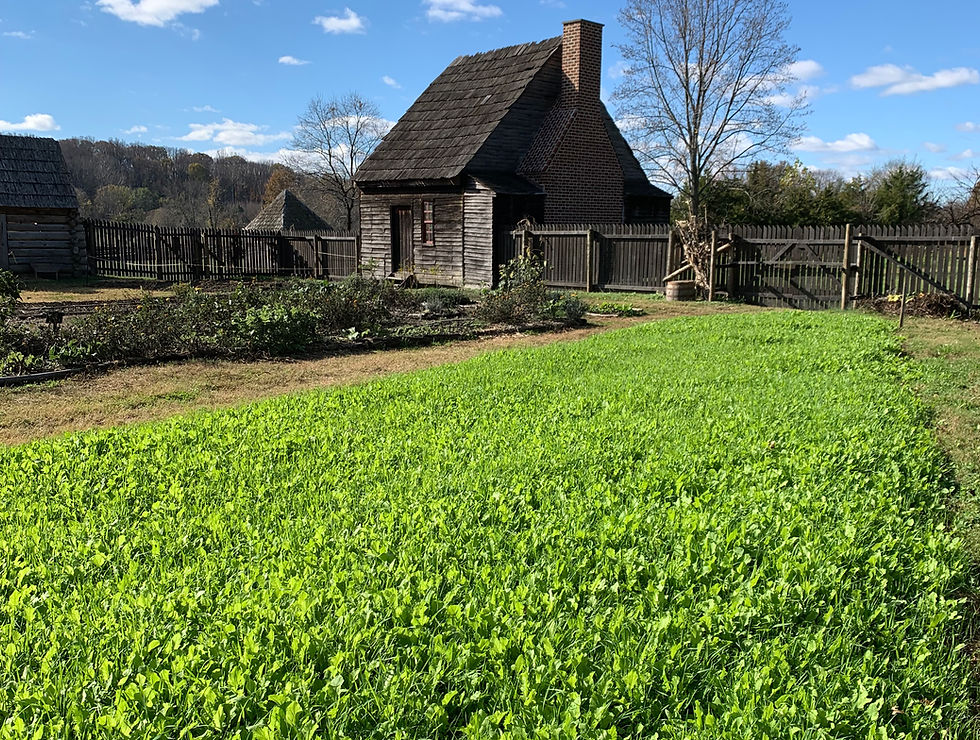Bottle Lambs
- abarnes86
- Apr 7, 2020
- 3 min read
by Kaylin Beach, Museum Educator and Volunteer Coordinator
Every year during lambing season, there is always at least one cuddly, lovable baby lamb who needs a surrogate mother. Honestly, as much as I want our Hog Island sheep to raise their own young in a healthy and independent way, it is a wonderful treat to have a bottle baby!

A friendly baby Nigel says hello to the camera.
My first year at the farm, we had a particularly adorable bottle baby. You may know the little fuzzy fellow by his given name, Sir Nigel Nicely Nicely. Yes, that incredible wether who ran for Mayor of the Barnyard came from humble beginnings. Rejected by his mother, Nuget, because he was smaller than his sister and less likely to prosper, Nigel would not have survived had Farmer Polly not stepped up to be a surrogate mother. Truthfully, the whole office quickly became his flock of surrogates, caring for Nigel so well that he began to think he was a ‘people’.
Today, Nigel is full-grown, grows a beautiful fleece every year, and has become quite the entrepreneur. Still, whenever I see him, I picture that sweet little lamb who used to chew on my apron every Saturday on the National Colonial Farm, and who quickly found his way into everyone’s hearts.

As an adult, Nigel has found his place, and his voice, among the flock.
Not all bottle babies are disowned by their mothers. One of the lambs bottle-fed at the Accokeek Foundation this spring was a triplet, and ewes (female sheep) only have two teats. Usually this results in one of the three lambs not receiving enough nourishment (sharing is not natural for baby lambs either!).

On the first day, bottle lambs must be fed every two hours, so they often accompany their surrogate parents home.
Young lambs become bottle babies for any of the following reasons.
Rejection from mother.
Mother is not letting down enough milk to support the lamb
Is a triplet or quadruplet, which is overtaxing on a mother’s milk production
Mother dies.
During the bottle feeding process, the first day is critical. Mothers have colostrum in their bag for the young lambs for the first 24 hours after birth. Colostrum is a thick, yellowish liquid that contains essential nutrients and antibodies for the lamb(s) since they are not born with their own. It is possible to feed bottle babies colostrum replacer, but it is always better to acquire it directly from the ewe. Which means surrogate mothers should be well versed in milking sheep!
Fun Fact! Some people will freeze cow or goat milk for use as a milk replacer. This can be helpful, but you must be careful with ratios due to the higher fat content.
After that critical 24 hours, bottle babies receive milk replacer. At this point, the Foundation usually hands our sweet bottle babies over to a volunteer to keep and care for at home. This year, our three bottle babies were split between two homes. Narya spent two weeks with Isabella and Maria Isabel, two dedicated Farmhands volunteers and experienced surrogate mothers.

The feeding schedule is less demanding after the first day or two, as the lambs eat every 4-6 hours instead.
I-Lambo spent a day with Marketing Manager, Casey Harlow, then found her ‘people’ in Regenerative Agriculture Coordinator KC Carr and Museum Educator Sarah McAndrews.
When Narya came back, Isabella and Maria Isabel took Furi home for two weeks. All three have returned to the National Colonial Farm fields, to be reintegrated into the flock.



Reintegration can be difficult for bottle babies since they are accustomed to being around humans. This year, the three bottle babies have developed their own little group within the flock and pal around like the Three Musketeers!
Between 30-45 days after birth, we will start weaning the bottle babies off of milk replacer. They will be grazing at that point, so they no longer need the supplemental milk.

Furi bonded with the family dog during her time with a surrogate family.
Over the years, the Accokeek Foundation has had the incredible support of many surrogate mothers for these bottle babies. The Foundation cannot thank you all enough for the countless hours of care and love you have given to these little ones, and know that they are grateful to you as well!

It’s important to keep newborn lambs warm, as they are susceptible to hypothermia without the warmth of their mothers. A snuggle on the couch does the trick!
THANK EWE!
All of the bottle babies in this post are part of the Accokeek Foundation’s flock of Hog Island sheep. Hog Island is an endangered breed of sheep whose status is listed as critical with the Livestock Conservancy. That means there are fewer than 2,000 of these sheep in the world, and less than 200 are registered in the U.S. each year. If you would like to help support the Foundation’s effort to preserve and care for these unique animals, please consider making a donation today.Learn more about Heritage Livestock ConservationDonate







